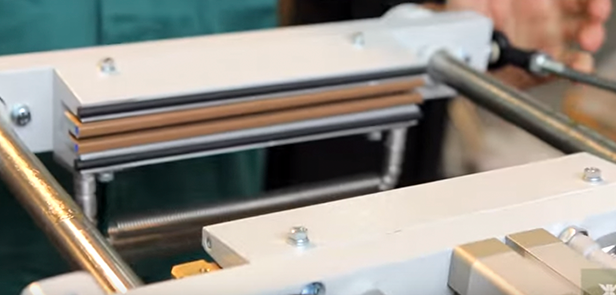
Categoria: Packaging
Importance of the sealing jaw temperature for perfect packaging seal
The perfect sealing of flexible plastic packaging is essential for the secure delivery of a product, a crucial factor in ensuring quality and competitiveness in the market. Proper sealing in the packaging process relies on the temperature of the sealing jaw, an accessory used to close the package.
Inside the machine, this device keeps the packaging in the correct position to be sealed. Therefore, the sealing jaw can be customized, made to measure for the company, in order to enhance productivity and efficiency. In addition to various sizes, it can be manufactured from different materials, such as carbon steel and stainless steel.
Types and formats of sealing jaws
At Indumak, the sealing jaws are made from sealing metals in carbon steel, with nickel-chrome treatment. Regarding the format, their grooves can be applied horizontally, vertically, or at a 45-degree angle, as needed. The blades are fixed to the horizontal sealing metals, as are the heaters, which can be of the flat solder type, using a 3mm nickel-chrome heater, or tubular, rated at 15 volts/500 watts.
Based on the types and characteristics of sealing jaws, it is possible to seal packaging in different ways, with variations applied to the metal solder set of the packing machine:
- Sealed by impulse sealing, with nickel-chromium tape;
- By hot bar with cartridge-type resistance;
- With eurolock system;
- With knife insertion;
- With dating system;
- Striped sealing (horizontal, vertical, or diagonal).
Temperature of the mordant
The temperature of the mordant to be applied at the time of sealing must be adjusted for each case. It is conditioned by a series of variables, among which the grammage of the packaging must be considered, as changes can affect productivity.
In general, thicker films may require a higher temperature to prevent the seal from being open. Thinner films, on the other hand, should be sealed at a lower temperature to avoid burning the seal, meaning the closure of the packaging itself.







